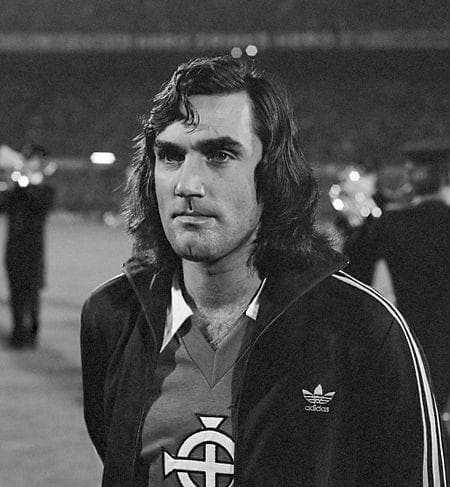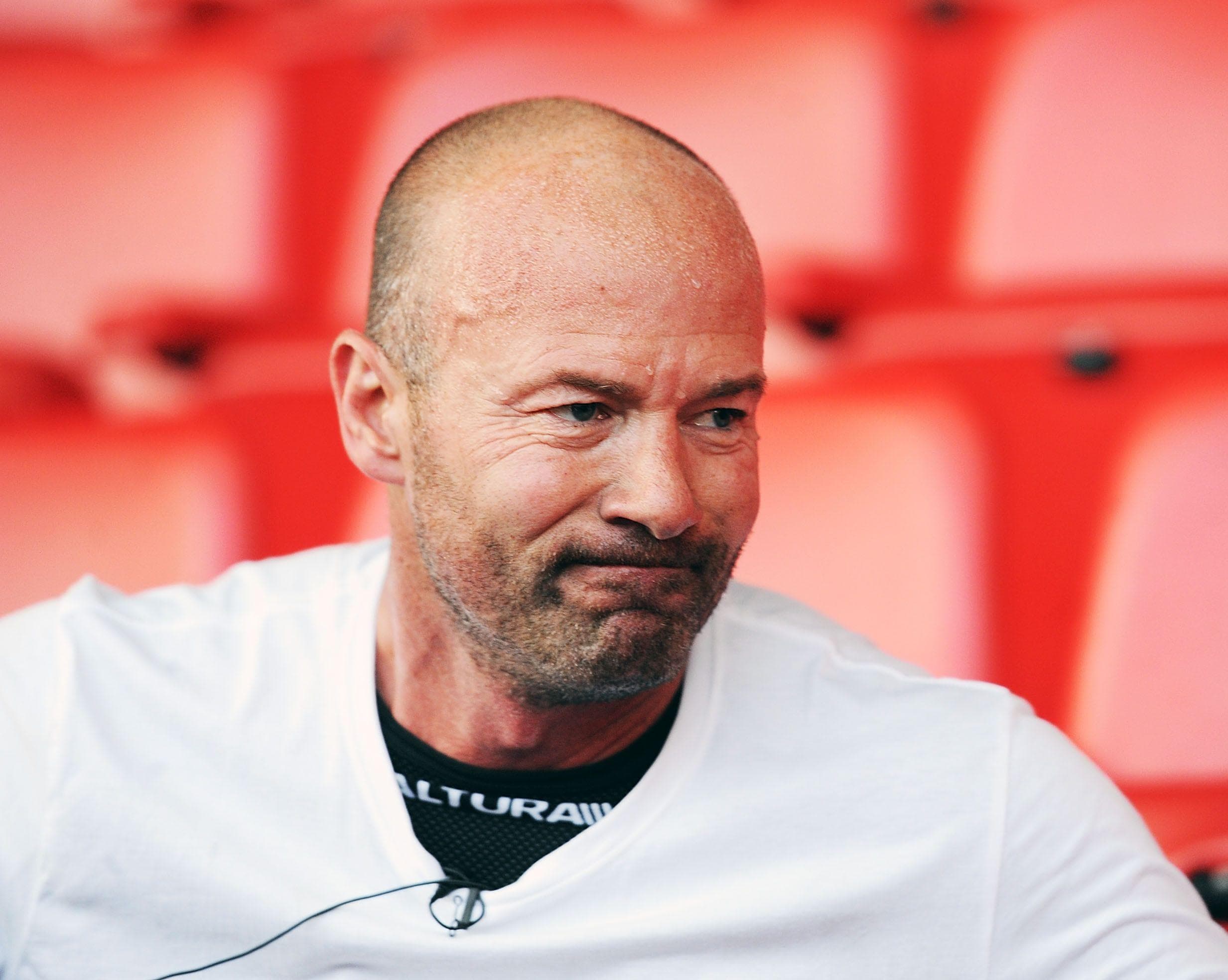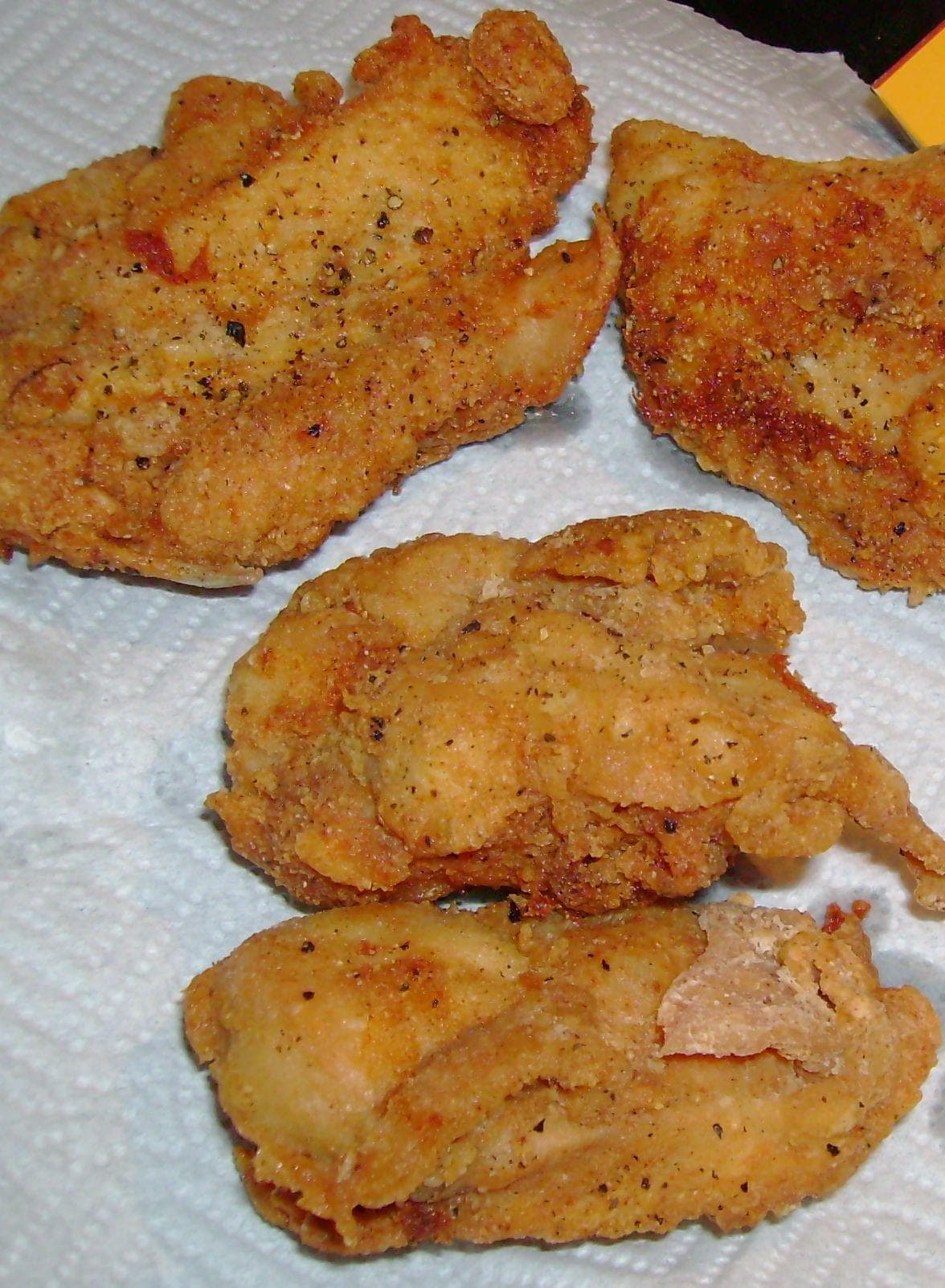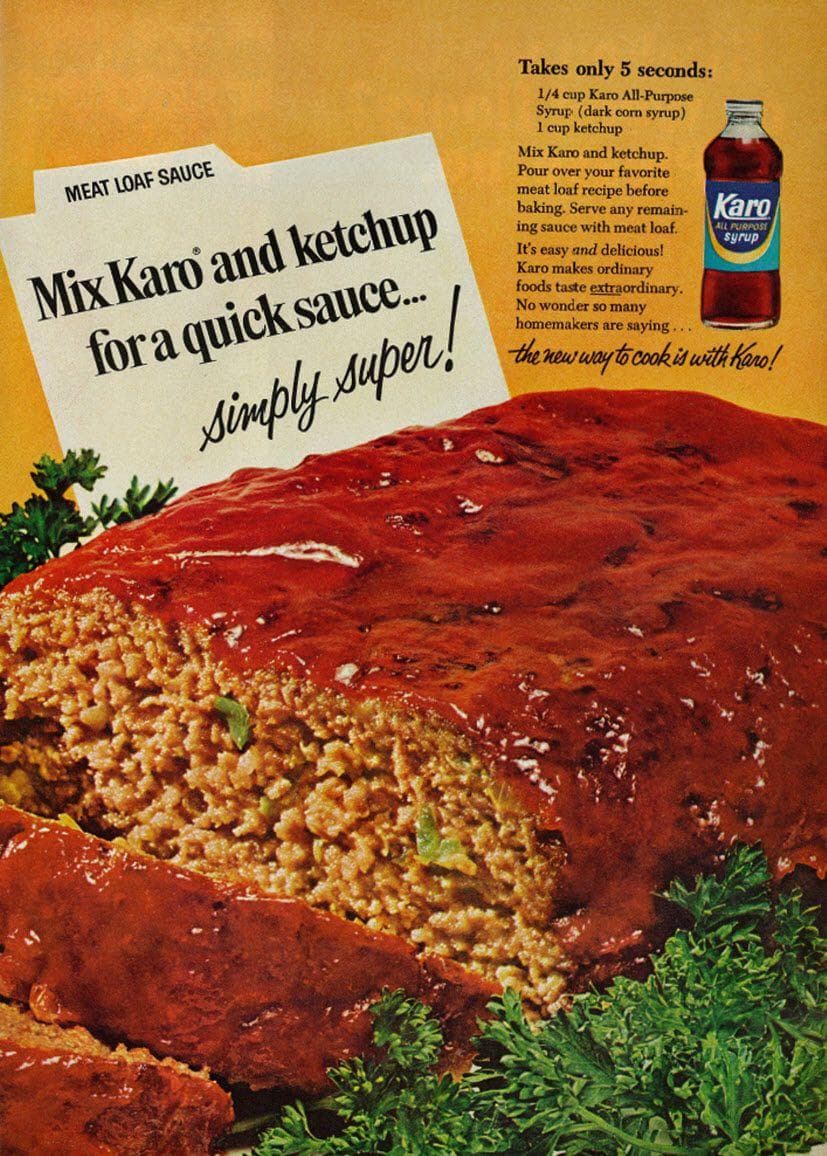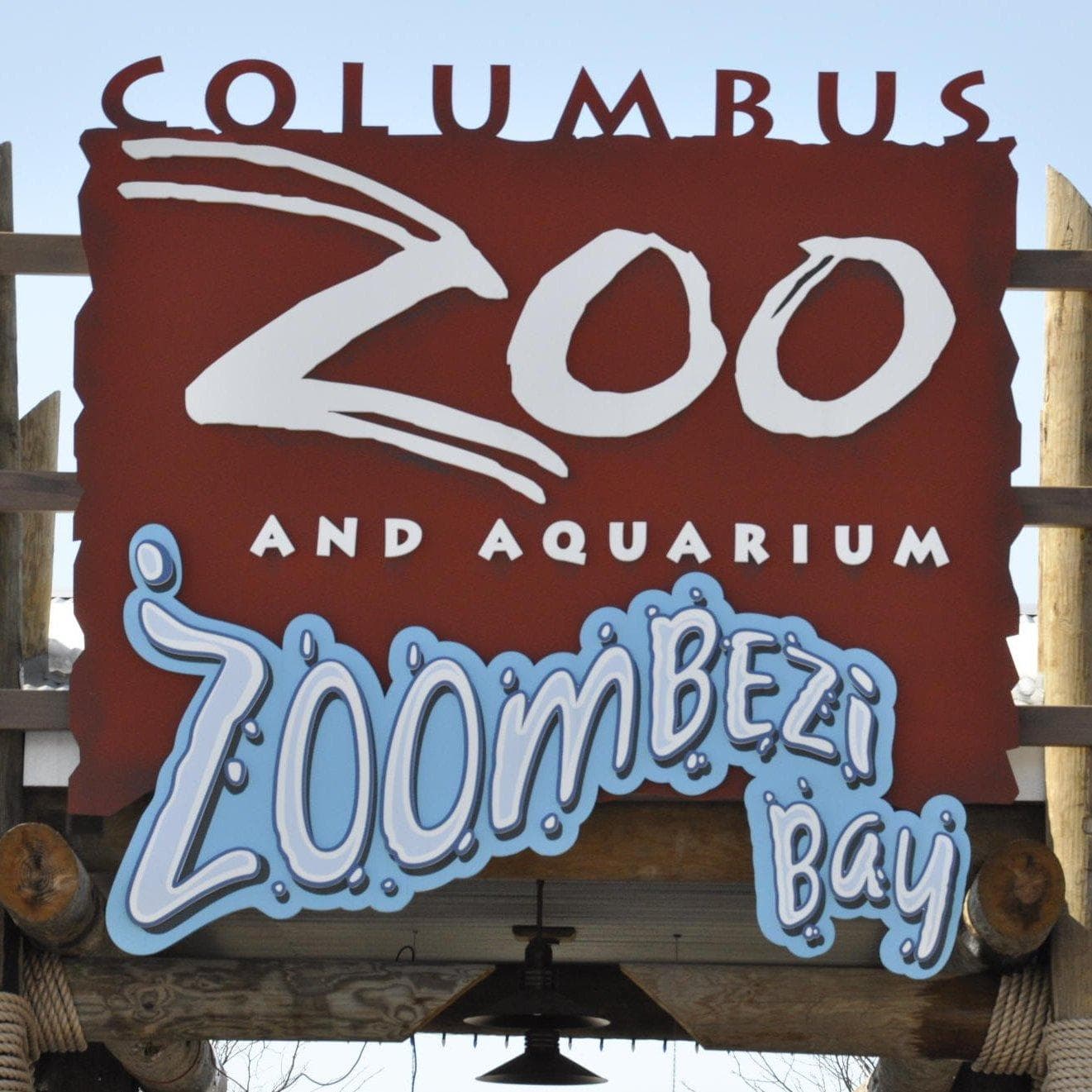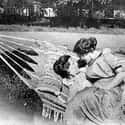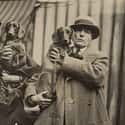-
(#1) The '30s Put An End To The Drag Balls That Flourished In 1920s New York
Drag balls were part of the heightened state of expression that defined the raucous 1920s. In New York City, these events drew crowds of thousands of dancers, performers, and curious heterosexual onlookers.
Notably, while segregation was the norm throughout the United States, drag balls were an integrated event - though white performers were much more likely to win prizes from the white judges.
The poet Langston Hughes described his experience at a 1920s drag ball:
[The] height of the New Negro era and the tourist invasion of Harlem, it was fashionable for the intelligentsia and social leaders of both Harlem and the downtown area to occupy boxes at this ball and look down from above at the queerly assorted throng on the dancing floor, males in flowing gowns and feathered headdresses and females in tuxedoes and box-back suits.
The burgeoning ball circuit of New York City crashed to a halt when the Great Depression began. Many blamed the rowdiness and "cultural experimentation" of the 1920s for the economic collapse, and the gay community was a convenient scapegoat.
Fearing aggression or financial retribution against their families and loved ones, many ball attendees left gay public life.
-

(#2) New York Police Began Actively Trying To Entrap Gay Men
In 1923, New York State adopted a law that made it illegal for one man to invite another to have intimate relations. Due to the number of gay people living and working in New York during this time, offenders were only prosecuted selectively and at random. It didn't become a widespread occurrence until the beginning of the Great Depression.
Apart from full-on bar raids, the primary means of detaining cruising men was police entrapment. Attractive plainclothes officers would enter the bars and engage in flirtatious conversations with men, only to arrest them if the men offered to leave the establishment to hook up.
According to "Social Factors in Case Histories of 100 Underprivileged Homosexuals," a 1938 mental health study, 97% of gay men prosecuted for sexual offenses in a single year were adult men soliciting consensual relations with other adults.
-

(#3) The ‘Pansy Craze’ Ended In Chicago
As the New York gay scene ascended and collapsed, a similar phenomenon occurred in Chicago during the transition between the 1920s and '30s.
The birth of the “pansy craze” can be attributed to Prohibition, when entertainment in general was driven underground to avoid legal consequences. The recent influx of immigrants from Europe and South America helped bolster the movement, creating numerous ethnic enclaves within the gay community. This led to the sudden proliferation of gay clubs and cabarets in the Near North and South Side, known colloquially as “pansy parlors.”
Historian Chad Heap remarks on the racial landscape of the pansy community:
African American drag entertainers performed for racially mixed audiences at some of the South Side’s most famous "black and tan" [cabarets]. Mexican "queers" carved out a space for themselves along Ashland Avenue, and ethnic working-class "queens" from the city’s North, South and West Sides met at private parties and public drags throughout the city.
The pansy craze ended quickly due to a sudden rise in unlawful activity blamed on the gay community.
-

(#4) A 'Sexual Psychopath' Law Was Passed To Incarcerate 'Deviants'
The dissolution of the Chicago pansy scene was the result of a targeted series of attacks on the credibility of the gay community. A number of reports about “sex criminals” were released throughout the 1930s, with sensationalized language like, “Danger! One thousand escaped feeble-minded and insane persons... most of them capable of bestial sex crimes... at large in Chicago!”
Sex crimes received extensive press coverage in Chicago - regardless of where they took place - to discourage Chicagoans from participating in any lewd or perverse behaviors themselves. The city council introduced a law that necessitated the installation of "moron alarms" - sirens that would sound from fire escapes to warn passersby of possible deviants.
In 1938, a “sexual psychopath” law was passed. The law allowed police and medical institutions to forcibly admit anyone suspected of deviant behavior into a psychiatric hospital or penitentiary for an indeterminate amount of time. Michigan was the first state to pass this law, soon followed by Illinois.
-
(#5) A New Hollywood Production Code Prevented Homosexuality In Films
Mirroring the sudden downturn of gay people in public life was their disappearance from the stage and screen.
Throughout the 1920s and early 1930s, pictures depicting men in dresses and openly gay characters were commonplace. After The Captive, a 1926 lesbian drama, made a splash on Broadway, it started a conversation about gay issues that was further expanded by The Drag, a play written by film star Mae West about gay men. Backlash ensued, and a New York state law was passed that prohibited the representation or discussion of homosexuality on stage.
In the early 1930s, a similar code was introduced in Hollywood. Olga J. Martin, a secretary of the Production Code Administration, explained the details of the code:
No hint of... perversion may be introduced into a screen story. The characterization of a man as effeminate, or a woman as grossly masculine would be absolutely forbidden for screen portrayal. This means, too, that no comedy character may be introduced into a screen play pantomiming a pervert.
-
(#6) Lesbianism Came To Be Seen As A Major Threat To Heterosexual Marriage
During the economic hardships of the 1930s, heterosexual men were self-conscious about their inability to provide for their wives and families. When this was sublimated into their gendered self-conception, lesbians became an issue.
Heterosexual marriage was built on the concept of a man providing and a woman nurturing, so the idea of women performing both roles was a threat to the sanctity of heterosexual marriage. It upended common expectations of gender roles, which many anti-gay advocates claimed was part of the social decay that brought on the Great Depression.
By contrast, bisexuality was more permissible, since it allowed for the possibility of a heterosexual dynamic.
-
(#7) Some Gay Women Roamed The Country Together As ‘Sisters Of The Road’
During the economic downturn of the early 1930s, lesbian women were faced with limited options: They could continue to live honestly and openly as women who love women, they could marry men to maintain a low profile, or they could skip town entirely.
Those who chose the latter option were known as "sisters of the road." They were typically from lower-class backgrounds, and may have become homeless or jobless following the increased sexual repression. For safety, these vagrant lesbians would often travel in large groups.
-
(#8) Some Began Living A Heterosexual Lifestyle As A Means Of Economic Survival
For the first half of the 20th century, women were generally discouraged from having jobs. Men were expected to support their wives and families. Women who did work typically did not make much money, and they were often reviled for "taking money away from a man with a family to support."
Working women were in particularly dire straits when the economy fell - doubly so if they were lesbians. Those who could not live openly or leave town often chose to live a heterosexual life for the sake of economic survival.
This group was largely made up of middle-class women. Upper-class women could afford to do what they wanted, and lower-class women had virtually nothing to lose from living freely or leaving town. Middle-class women would take a husband in order to survive the Depression, and possibly participate in lesbian affairs on the side.
-

(#9) Some Middle-Class Gay Women Self-Identified As ‘Lesbians’
While many lesbians married men for the sake of survival, they would often continue their “bisexual activities” in private. The appearance of their heterosexual marriages guarded them from stigma and possible legal consequence.
Not all lesbians were in hiding, however. There were a handful of safe enclaves where lesbians were still able to congregate, albeit in a more clandestine fashion. These spaces were often found in college campuses, summer camps, and communal living situations.
Due to the financial barriers to accessing many of these spaces, these communities were primarily comprised of middle-class women.
-

(#10) Gay Groups Challenged The Prohibitions Brought Against Them
While their campaigns were largely unsuccessful, there were several organized attempts to fight back against the new prohibitions on gay bars and public spaces. The Mattachine Society and Daughters of Bilitis, gay male and female groups respectively, were formed in the 1950s to take the state to court.
While the activities of these groups are beyond the purview of what happened during the Great Depression itself, the founding members came up as gay youths and young adults during the rise and fall of gay public life. Their experiences ignited their desire to challenge state intervention in their lifestyles.
-

(#11) Gay People Could No Longer Congregate In Public
In New York, legislation was passed to prohibit homosexual people from gathering in any state-licensed public space. This meant bars, restaurants, and clubs were all in danger of losing their liquor licenses or even their leases if they employed or served gay people - or even allowed them to congregate on the premises.
Despite the precautions exerted by the owners of these gay establishments, the State Liquor Authority still closed hundreds of businesses for “tolerating” a gay presence. The practice continued well into the 1960s.
-
(#12) Many Felt The Economic Downturn Was An Affront To Traditional Masculinity
The sudden disappearance of the public gay world was, at its core, an issue of gendered self-expression and understanding.
Both male and female homosexuality was viewed as a threat to masculinity. Many moral authorities claimed that the Depression was a direct result of perversion and experimentation, and the concepts being perverted and experimented upon were gender roles. A manly woman was considered a failed woman and a false man, a feminine man a weak man and a grotesque mockery of a woman.
While homophobia was the obvious activating force behind the new conservatism of the 1930s, it may not have been so targeted. Many people were not as fearful of gay people as they were “rocking the boat” in any capacity. During this turbulent era, Americans worried that any deviation from "traditional norms" could make the financial situation even worse than it was already.
New Random Displays Display All By Ranking
About This Tool
Homosexuality has not always been taboo in history. People are now keen to emphasize that this is a natural behavior, which is engraved in human genes. In the 1920s, gay self-expression became more common in the United States, although still subject to discrimination and attacks, sexual liberation was a product of contemporary social development. There are many hidden gay clubs and masquerades in urban, and Hollywood has even begun to produce movies with gay characters.
In the mid-1920s, before The Great Depression, gay events could even attract more than 7,000 people from all races and social classes, including not only gay but also lesbian, bisexual, transgender, and even heterosexual people. Here the random tool introduced 12 detailed information about gay self-expression in the 1920s.
Our data comes from Ranker, If you want to participate in the ranking of items displayed on this page, please click here.

